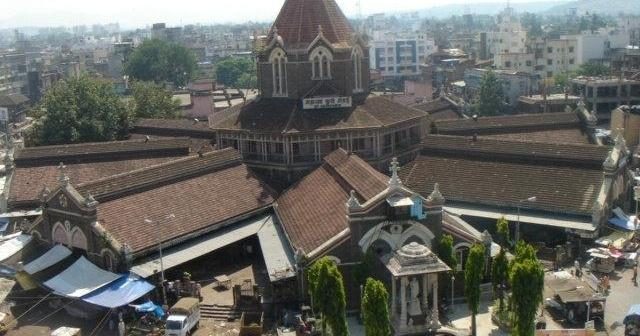The Mandai area of Pune, centered around the iconic Mahatma Phule Mandai (formerly Lord Reay Market), represents a vital part of the city’s socio-economic and cultural fabric. Built in 1886 and named after Mahatma Jyotiba Phule in 1938, the market stands as an architectural marvel from the British colonial era.
Its design, featuring Gothic style arches and an octagonal tower, cost ₹2.3 lakh at the time, an enormous sum for that period.Historically, the Mandai served as Pune’s central hub for the distribution of vegetables and other commodities. Before its construction, vegetable vendors operated out of open areas near Shaniwarwada. The market was built to organize these vendors under one roof, offering a permanent solution to the growing needs of the city’s population.
Over time, Mahatma Phule Mandai became not just a marketplace but also a focal point for civic administration. It served as the headquarters of the Pune Municipal Corporation (PMC) until 1966, hosting city council meetings in its grand hall. The Mandai also became home to cultural icons such as the Sharada Ganpati, adding a spiritual dimension to its bustling commerce.
The Modern Mandai: Struggles and Renewal
Today, the Mandai area continues to operate as one of Pune’s largest vegetable markets, although it faces challenges like congestion, poor infrastructure, and competition from modern supermarkets. Despite its historical significance, the market infrastructure is aging, and vendors struggle with a lack of amenities like adequate sanitation and drainage systems.
In recent years, there has been growing momentum to restore and modernize the Mandai while preserving its heritage. The Pune Municipal Corporation has initiated several redevelopment projects aimed at improving the area’s civic infrastructure. These efforts include plans to repair roads, upgrade drainage systems, and improve waste management. The redevelopment is designed not only to serve local vendors but also to attract more tourists by capitalizing on the market’s historical appeal.
Furthermore, as Pune continues to expand as a major IT and industrial hub, there are ongoing efforts to balance modernization with heritage conservation. Projects in the Mandai area are part of broader plans to improve the livability of Pune’s city center, making it both a commercial and a cultural destination.
Future Prospects
With Pune’s population projected to grow substantially over the next decade, the revitalization of the Mandai area is critical. While the market has retained its importance in the city’s daily life, its modernization will be key to ensuring that it continues to serve both locals and tourists. Redevelopment plans include pedestrian-friendly zones, better traffic management, and the integration of digital technologies for vendors.
Despite these forward-looking efforts, there remains a delicate balance to strike between modernization and maintaining the Mandai’s historical charm. Preserving its cultural and architectural significance while ensuring it adapts to the needs of a growing city will be a challenge for urban planners and local authorities alike.





